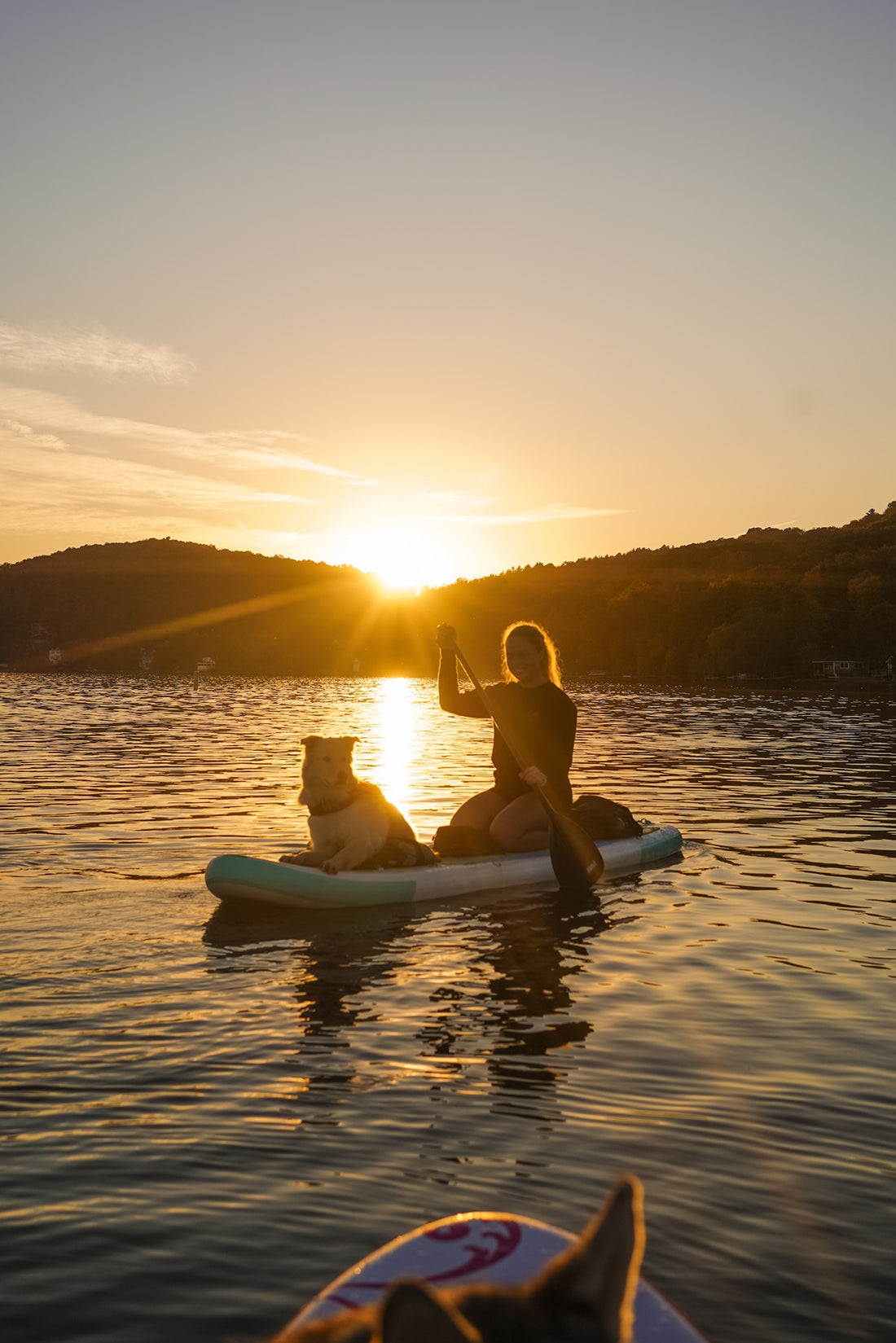
Paws on paddles - Week 3
Share
Last week, we explored the essential gear to maximize your paddle boarding experience. This week, we'll dive into a step-by-step guide to comfortably introduce your dog to the board.
How to introduce your dog to the paddle board
Picture this scene: gliding into the sunset, the water mirroring the sky's warm hues. Your faithful companion sits proudly at the front of your paddle board, soaking in the beauty of nature.
On your cue, your dog enters the water, joyfully swimming alongside your board. As the sun dips below the horizon, casting its final golden rays, you are reminded how lucky you are to be able to share these precious moments with your beloved friend.
To make this dream a reality, preparation and training are key.
Every dog is different.
Some will jump straight onto your paddle board like they've done nothing else in their lives. Others are more cautious. It is our responsibility to set our dog up for success and a comfortable experience from the very beginning.
Through patient guidance and careful preparation, you can ensure a seamless and joyful experience for both you and your dog.
By following the steps below, you lay a solid foundation for a positive first-time experience with paddle boarding and for your dog to enjoy these adventures in years to come.
Step 1 - Investigate the paddle board
Your dog's first encounter with the paddle board should take place in a safe environment on land. This could be in the living room, backyard, or at the beach. Inflate the paddle board and allow your dog to investigate it at their own pace. Praise them for touching or even stepping onto the paddle board. If your dog needs a little more encouragement, you can place treats on the paddle board to make it a positive experience.
Step 2 - Add movement
Once your dog is comfortable moving around on the paddle board while it is lying on the ground, you can begin imitating how the paddle board will move in water by carefully lifting it to create movement. Gradually increase the challenge until your dog feels at ease. With your dog next to you, you can also lift the board and carry it with you or tap on it to make sounds. The more desensitized your dog is to any situation or sound, the better!
Step 3 - Cues
Already when on the ground, you are advised to use the cues you plan to employ when paddle boarding with your dog. By setting a clear framework from the very beginning, your dog will know what is expected of them when paddle boarding with you, making it easier for them to succeed.
Here is a list of useful cues for paddle boarding with dogs:
- Get on: Your dog can enter the paddle board. This cue is useful for eager dogs that want to get on the paddle board while you are still preparing your equipment.
- Off: Your dog is allowed to leave the paddle board. This cue is useful, for example, when paddling up to a beach, to prevent your dog from jumping off the board as soon as you hit the shore.
- Come: A solid recall is essential if your dog leaves the paddle board for a swim or a run on the shore.
- Sit/lie down: Having your dog on the paddle board adds a challenge to balance. If waves from a boat hit you or the conditions are challenging, it helps a lot to be able to place your dog in a sit or lie down position. It is easier to maintain stability in these positions.
Step 4 - Enter the water!
When you've mastered the previous skills in various environments and feel comfortable on a paddle board without your dog, it's time to enter the water together for the first time. Don't forget your life jackets!
"I recommend starting in shallow water," says Kari Schibevaag, World Champion in kitesurfing. She has years of experience paddle boarding with her Jack Russell Terrier, Truls.
If your dog becomes unsure and jumps or falls off the board, having solid ground under their paws can be comforting for them. Praise and reward your dog for staying on the board and performing the desired behavior.
Kari recommends kneeling on the paddle board in the beginning to maintain balance on the water. Start with short sessions initially to ensure a positive experience.
Another reason for short sessions is that the unstable surface challenges your dog's core muscles. They might not be accustomed to using all these muscles, and it can be tiring for them to be on the paddle board for an extended period. Gradually, as they get stronger, they can participate in longer sessions without getting fatigued. Variation by allowing them to swim and walk on the shore is recommended.
Read the full interview with Kari
Have fun during your first sessions, and stay safe!
Next time, we'll dive into safety when paddle boarding with dogs.